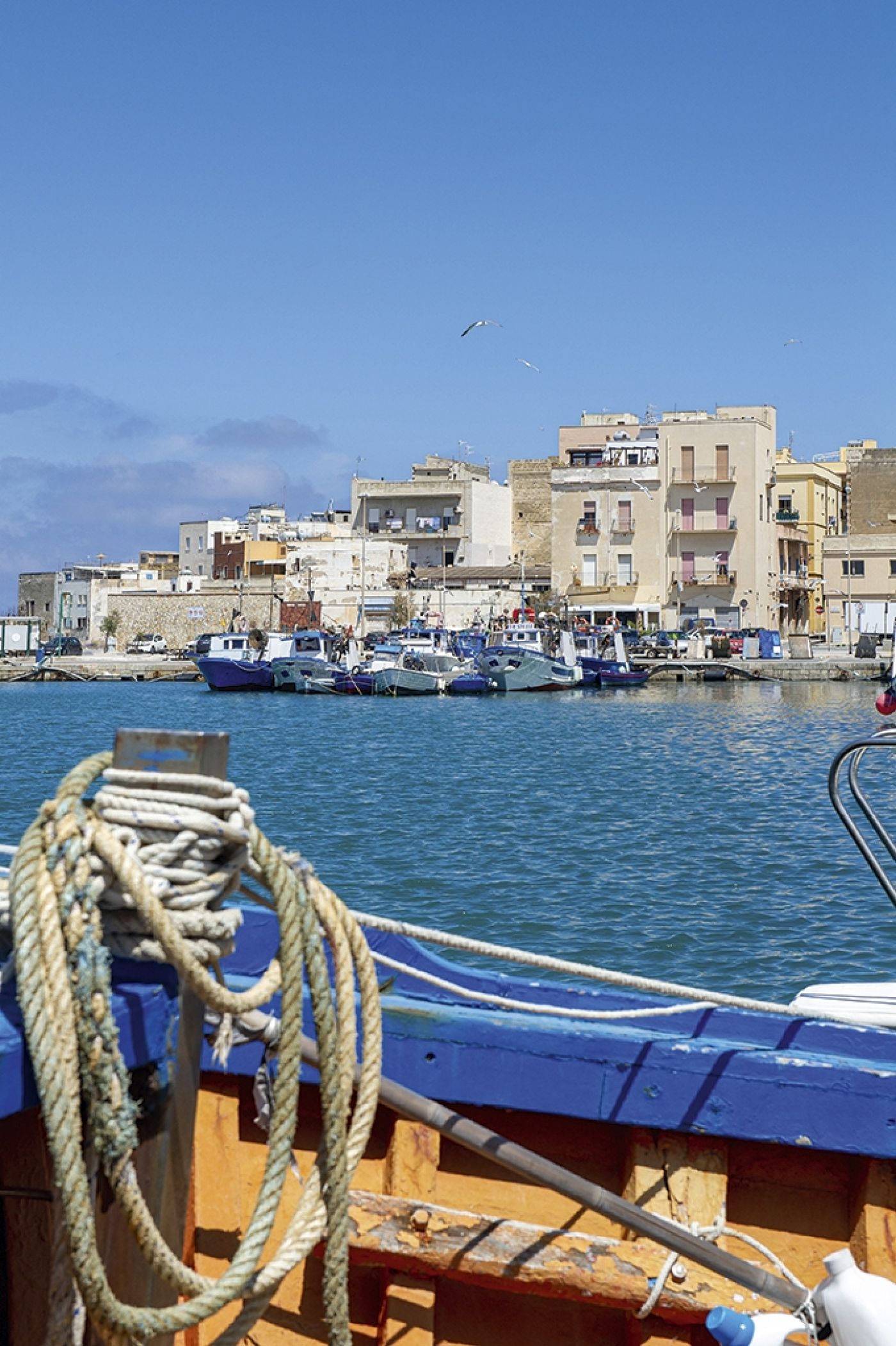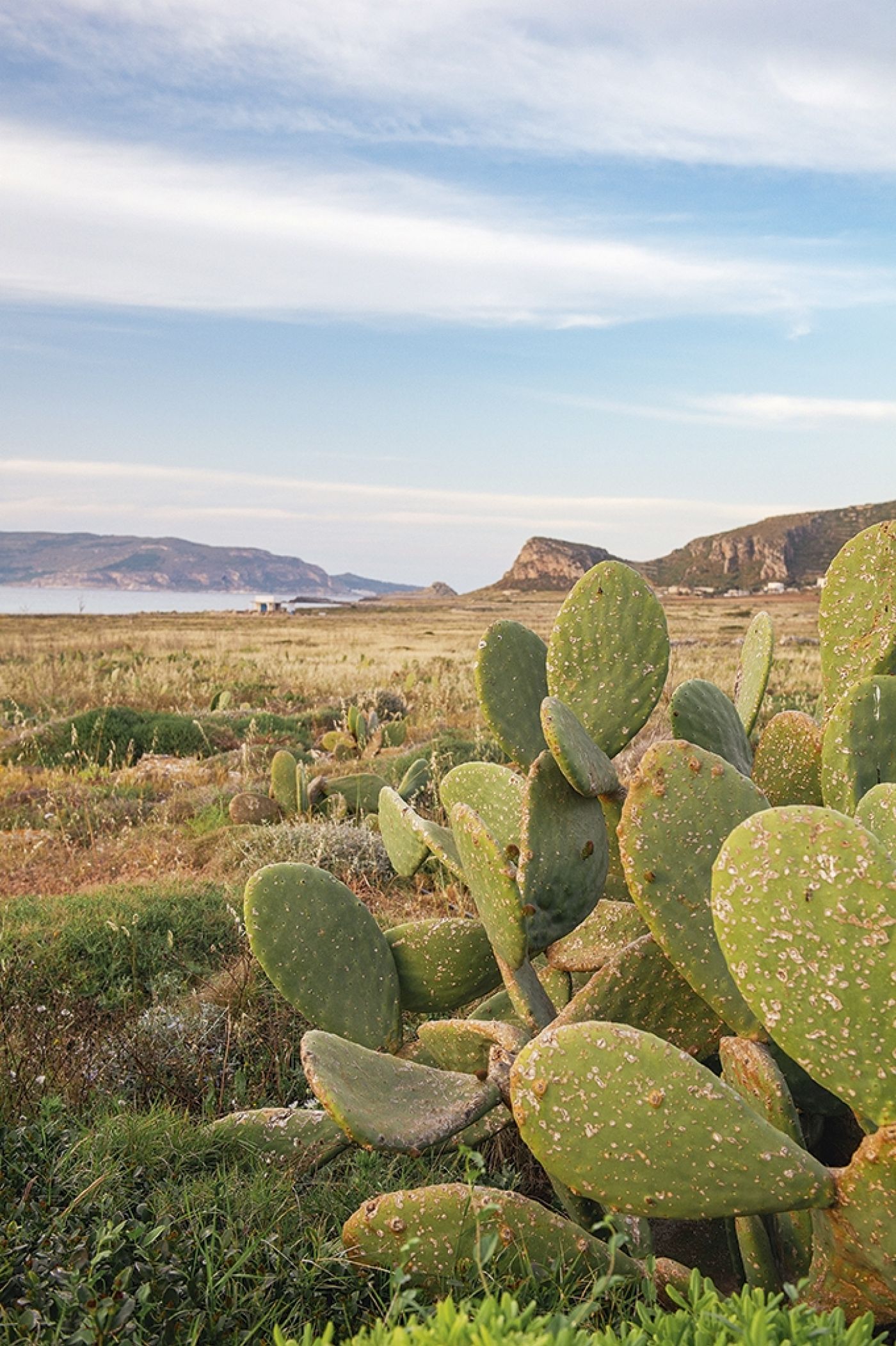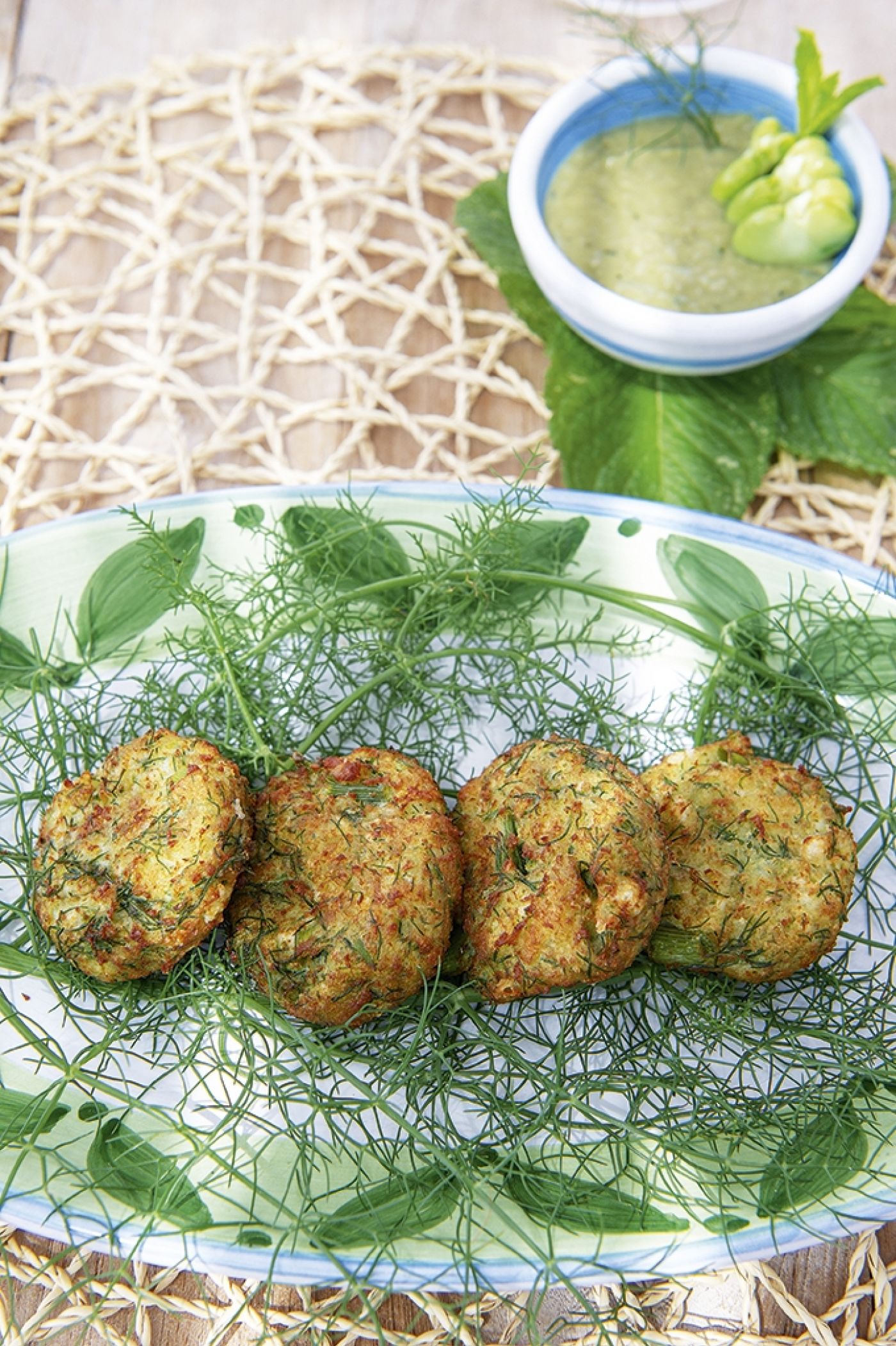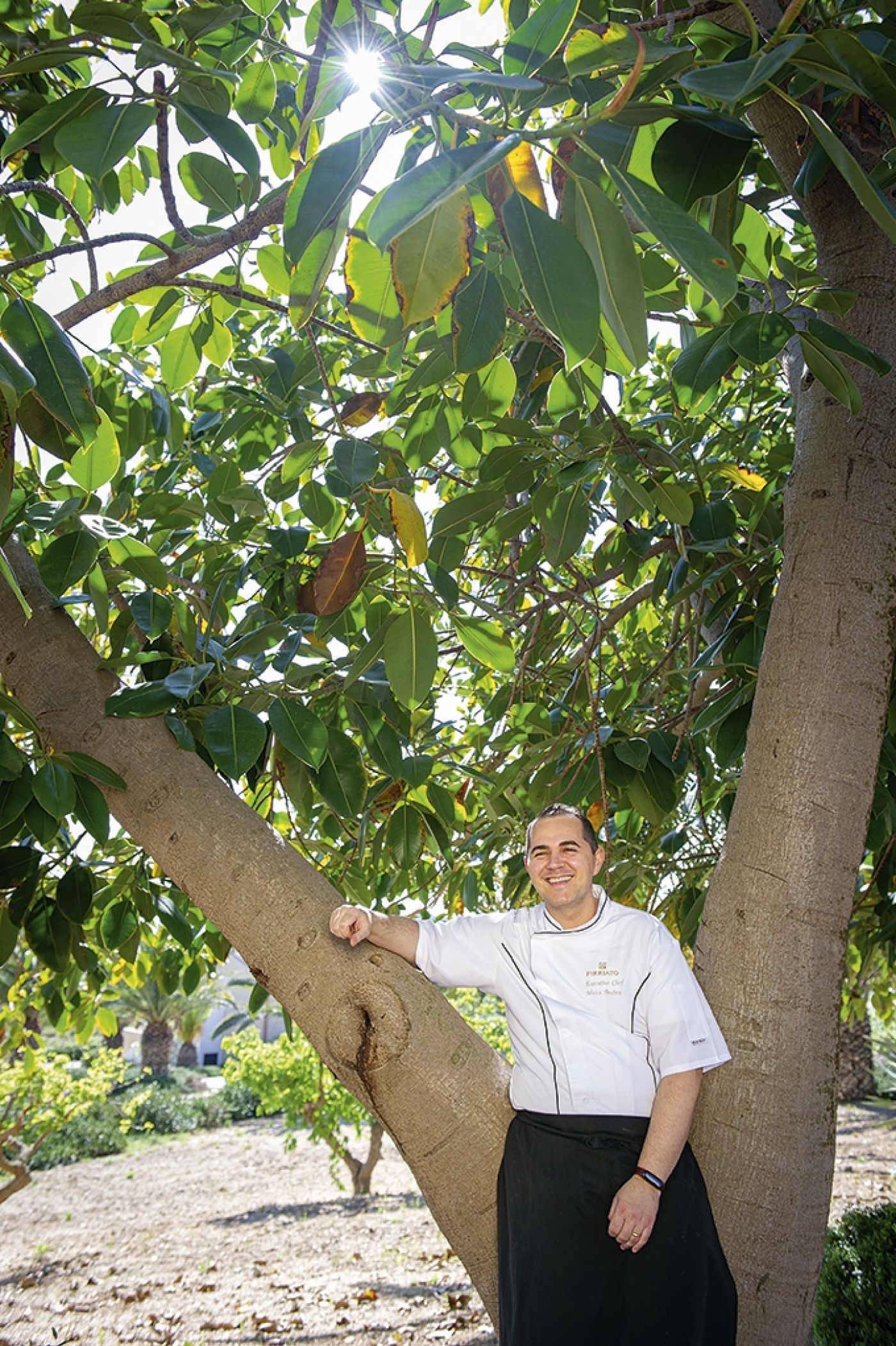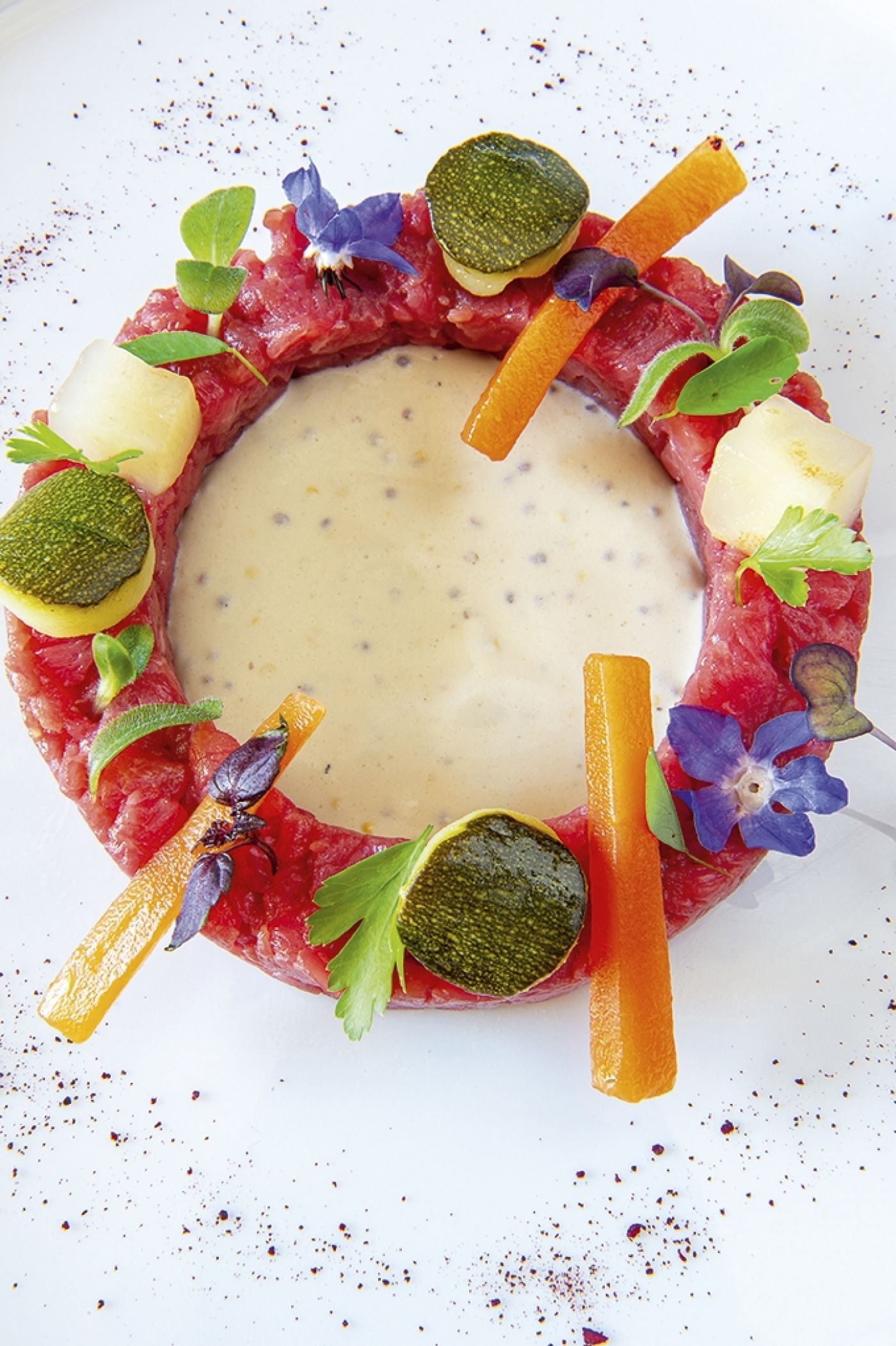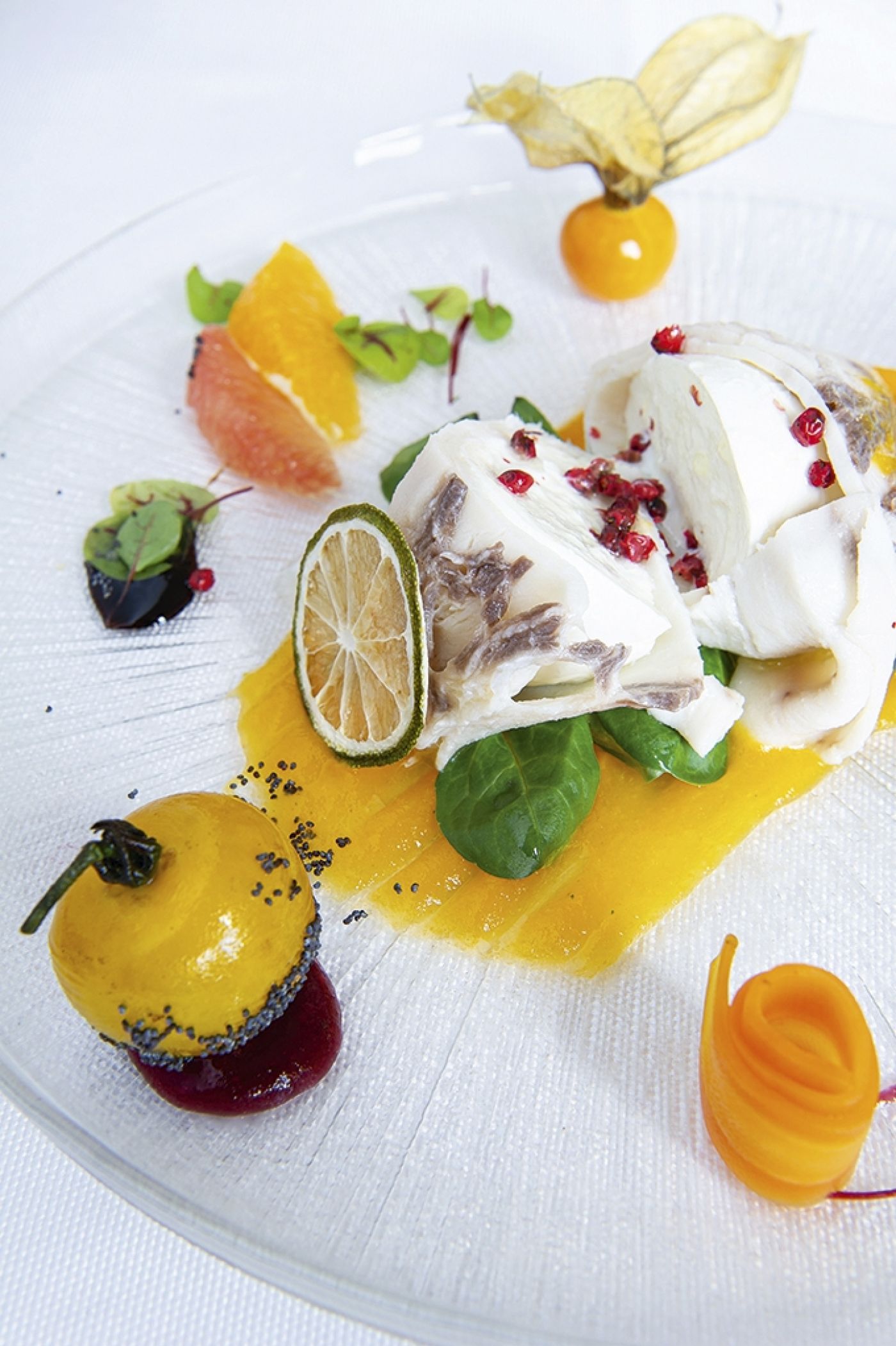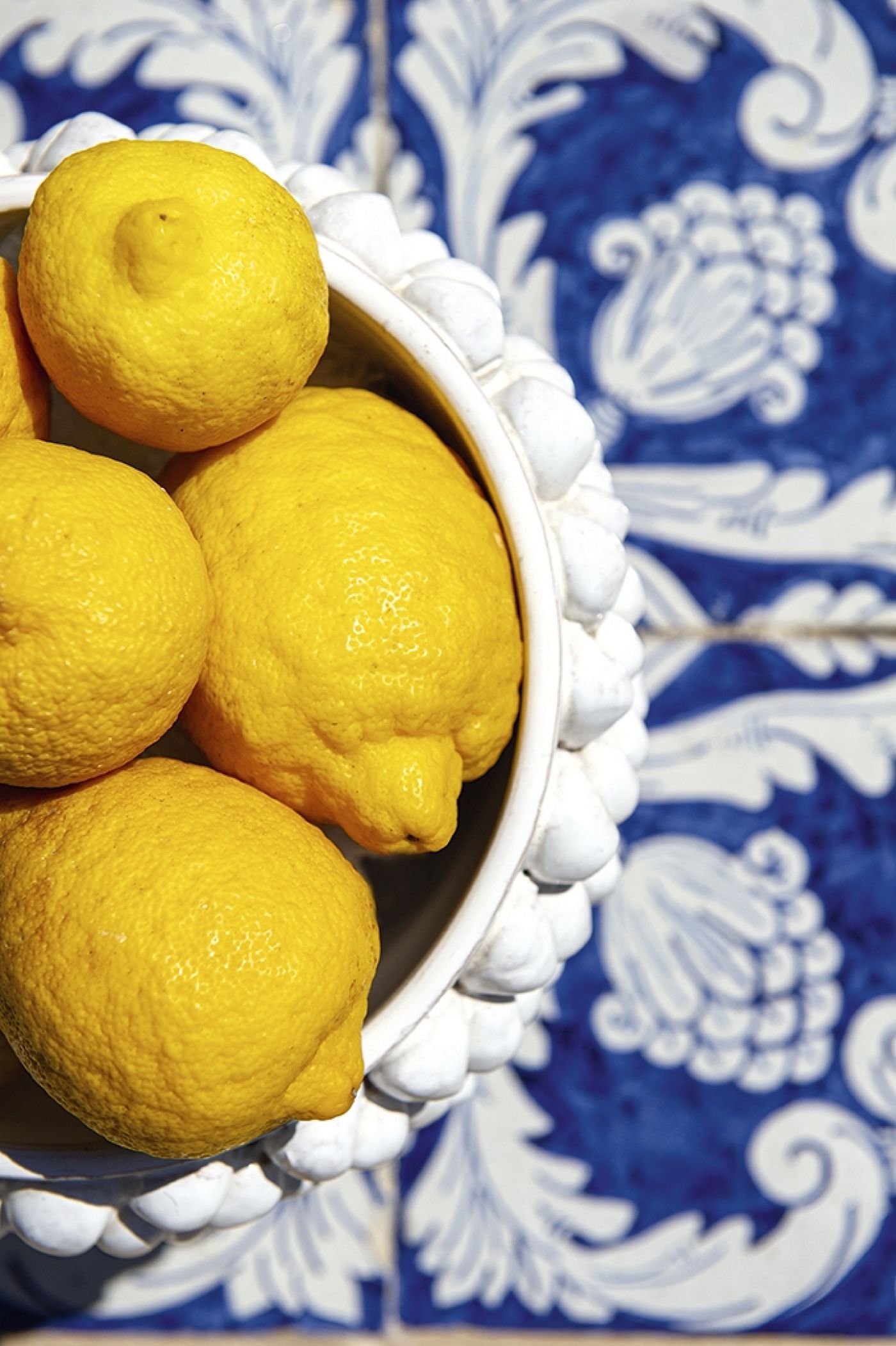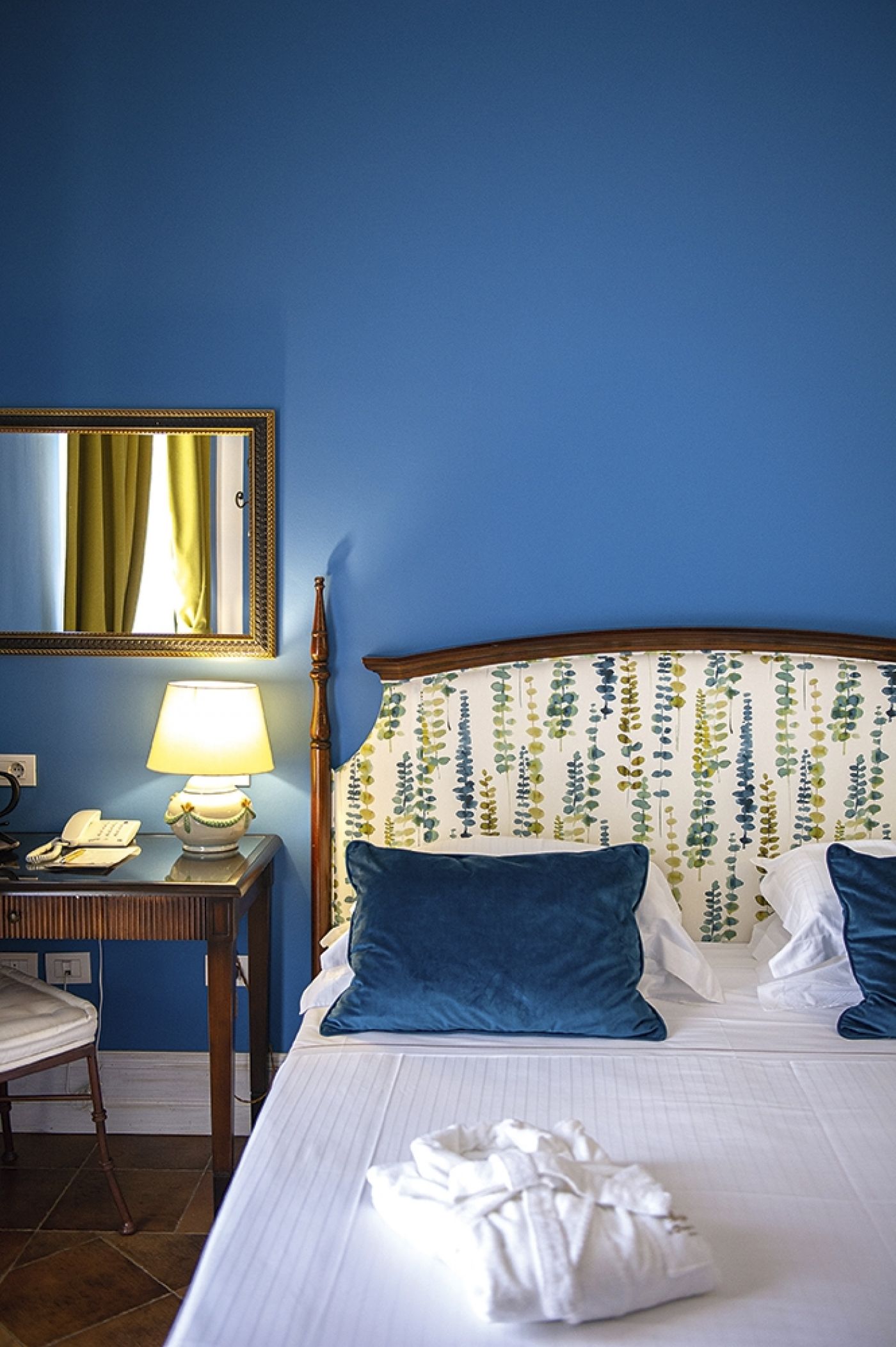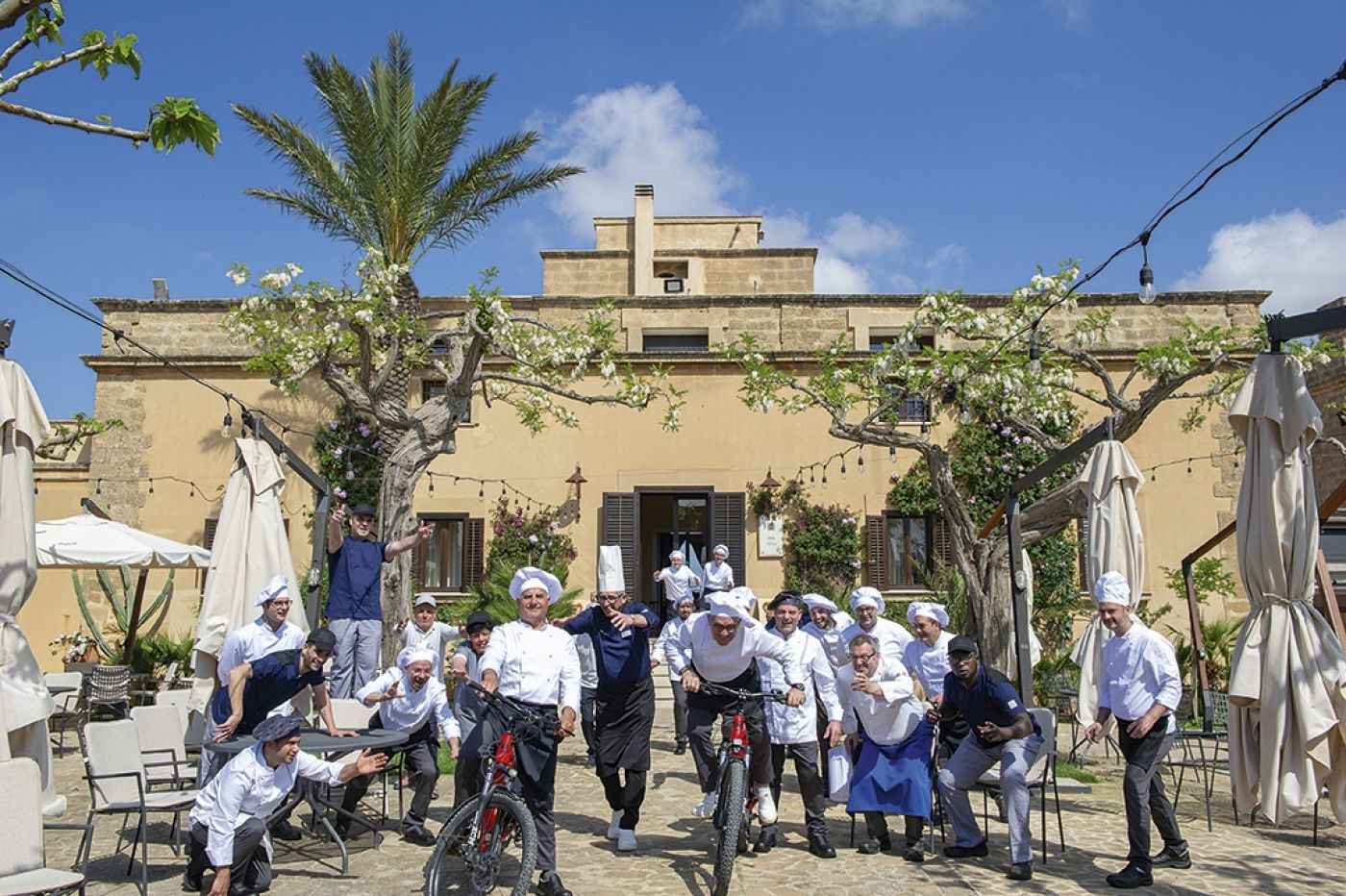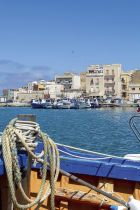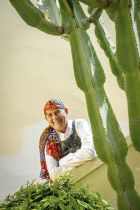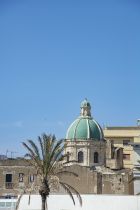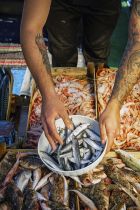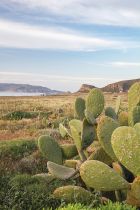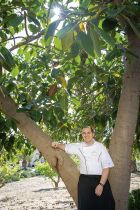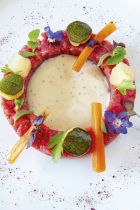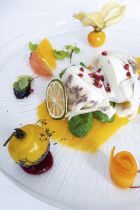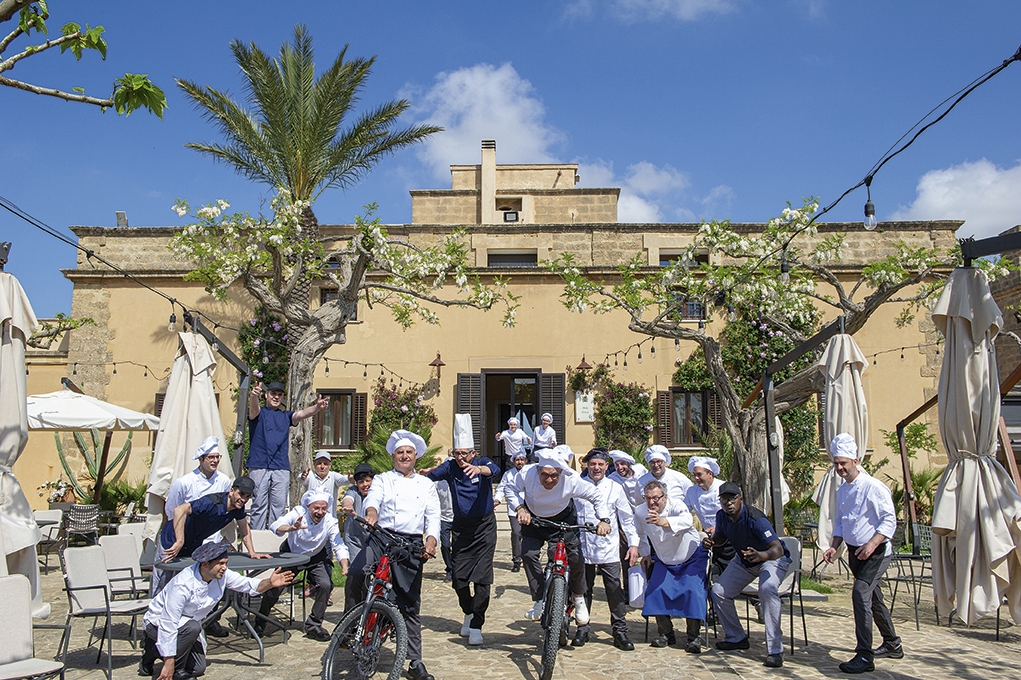
Food and Travel Review
Signor Nino sits in the middle of his garage, a messy agglomerate of junk, boxes and memories, surrounded by tangled piles of fishing nets. His slow, repetitive gestures create a suitable first impression of Trapani. ‘I’ve been repairing them all my life,’ he explains with a shy smile; his father and grandfather, whose yellowed portraits on the shabby walls stare out with a severe gaze, did the same.
Everything here revolves around the sea, and it couldn’t be otherwise. The city of Trapani sits in the westernmost tip of Sicily, dramatically surrounded by water on three sides.
After a brisk walk across the chiaroscuro of the alleys of the Centro Storico, squeezed on to a narrow tongue of land jutting into the water, you emerge into the light of the port. The sun is still low on the horizon and yet the light is strong, bold and African in its intensity. In many ways, this corner of Italy already feels a lot like North Africa – for good reason since the coast of Tunisia is less than 160km away.
Nicola Bandi, chef of Osteria il Moro, awaits and leads the way towards the colourful succession of pescherecci, the fishing boats that have just returned from their night-long
mission at sea. Today’s catch gleams in the morning light, revealing octopus, John Dory, red prawns, bonito, mackerel, sardines and much more. The fishermen talk loudly from one boat to the other, the older ones displaying wrinkled, sunburnt faces sculpted by years of salt and wind.
After a good half hour of trading, Nicola leaves with his purchases distributed across several shopping bags. ‘You can easily spend a fortune here,’ he laughs, making for his restaurant on Trapani’s main street. ‘The John Dory is for the pasta. I will add a tuna bottarga cream and thyme-flavoured breadcrumbs. The tub gurnard will go in the couscous soup, while the sardines will be the base for a new dish. I have a stuffed version of pasta con le sarde in mind.’
Together with his brother Enzo, Nicola started his business six years ago and Trapani, miles away from the tourist radar, was put on the gourmet map of Sicily once and for all.
The menu features beautiful, evocative names. Sapore di mare – linguine pasta sautéed in an anemone cream and fresh sea urchin, with the added sweetness of candied lemon – feels like a dip in the Mediterranean. The delicate foam of sea water on top reminds you of waves crashing against the rocks. The territory is a constant source of ideas – from dishes inspired by the nearby salt pans, where ‘mountains’ of cod and puffed rice are served on a tile, paying homage to the tiles that protect the salt from the autumn showers, to an impressive reconstruction of the Nubia garlic braid. The latter is made with leek, while calamari are moulded into the shape of garlic, with red berries helping to achieve its peculiar tinge and ginger adding a pleasant piquancy.
The small hamlet of Nubia, where the real thing is cultivated, is only a short drive away. A star of Sicilian cuisine, red garlic is an almost alchemical ingredient, often defining the identity of a dish. Strong in taste and with an intense aroma, yet delicate and digestible, its highly prized quality derives from the clay-rich soil where it’s grown, near the salt pans.
‘Growing garlic is in our DNA. My father, my grandfather, they all grew it. It’s always been there, although recognition came only in 2002, when it became a Slow Food Presidium,’ explains Giovanni Manuguerra, who coordinates the producers’ consortium. ‘Biodiversity, small-scale production and traditional cultivation methods make it an authentic culinary gem. Every step is done by hand, from sowing to harvesting.’
Further away, in the openness of the green field, Alberto Piacentino and his wife Rosalba Gallo are inspecting the growth of the plants. They explain that when harvest season begins, it will be carried out, as always, at night-time.
'The coastal road to Marsala unravels along a low-slung land of salt flats and canals, dotted with Don Quixotesque windmills. Salt has been Sicily's white gold since ancient times'
‘We start at one or two in the morning, when the humidity is right and the leaves are moist,’ says Alberto. ‘The heat of the day would break them and compromise the following plaiting operation. Once harvested, the bulbs are sorted by size and woven into long braids, which are then hung on balconies or stored in cellars.’
‘It’s hard work, but a plate of pasta cu l’agghia is the best reward,’ laughs Rosalba. Known as pesto alla trapanese, this chunky red and green sauce made with garlic, tomato, almonds, basil and olive oil is as saturated and sun-drenched as the land it comes from. Traditionally prepared in a terracotta mortar, it is then stirred into busiate pasta and sprinkled with grated pecorino.
The journey continues along the coastal road to Marsala, which unravels along a low-slung land of salt flats and canals, dotted with Don Quixotesque windmills. Salt has been Sicily’s white gold since ancient times. At some point even Roman soldiers were paid with
it – hence the word ‘salary’, literally ‘payment in salt’.
The wind picks up, bringing wafts of the sea, wild fennel and jasmine. The windsurfers are out, their silhouettes crowding the horizon. ‘I have always been drawn to this area, attracted by its colours, its smells, its incredible sunsets,’ says Marsala-born oenologist Nicola Centonze. And no wonder it also inspired him professionally. ‘The swells of aromatics awoke my passion for spirits and led me to conceive a Mediterranean amaro that would be totally natural. No sugar, no artificial colours,’ he says. After four demanding years of research, Reset was born. ‘Laurel, wild fennel, rosemary and bitter oranges skin are the main aromatics in your glass,’ explains Nicola. ‘It “resets” your mouth, just like this wind resets your thoughts.’
These coastal flats are also very good for the vineyards. ‘This land has a lot of sapidity. Vineyards are very healthy here thanks to a windy, sunny and dry climate,’ continues Nicola, who is also the owner of a small plot of land nearby, where he started a small production of vino perpetuo. ‘I have laid the foundations for my children and grandchildren,’ he smiles.
The process of making the poetically named ‘perpetual wine’ is akin to the Solera fractional blending system used for sherry: the timeless wine is kept in barrels and topped with new wine each year, when a small quantity is removed and bottled.
The city of Marsala is where it all began – and most of us are familiar with the last part of the story, when Scouse merchant John Woodhouse, forced by bad weather to put ashore, got a taste for the local wine. Thinking it would be as popular as sherry and port had become, he began shipping it to Britain, fortifying it with alcohol to aid its survival during the long journey at sea. It was 1773 and that’s how ‘Sicily Madeira’, later known as Marsala, was born.
'The coastal flats are very good for the vineyards, which are very healthy thanks to a windy, sunny and dry climate. The vino perpetui beloved on the island has little to do with the sweet, fortified Marsala we know... it has a savoury nuttiness'
Vino perpetuo, however, was what the Sicilians drank before the British, and it has little to do with the sweet, fortified Marsala we know today. In the half-light of her cellar, 14km out of town, winemaker Josephine de Bartoli explains how her late father Marco decided to revive this traditional wine: ‘It was 1978 when he became an artisan of wine. He started from this place, his grandparents’ abandoned baglio [a traditional fortified farm]. In the cellar, he found some perpetuo made by them. We don’t know exactly how old it was, but he gave new life to it.’ This is how their Vecchio Samperi was born.
‘This is not a Marsala. It is the wine from Marsala,’ Josephine clarifies. ‘It was a “difficult” wine. For a start, it was entirely natural and back then everything was still based on large-scale industrial production, so it was a challenge. He opened up a new path – new yet very ancient at the same time,’ she continues, offering a glass of their Vecchio Samperi Ventennale. It has a savoury nuttiness, achieved during an average age of 20 years, expertly ‘modelled’ by the hot Sirocco and cool Tramontana winds constantly sweeping through the open windows. You can’t help but feel it’s a wine that is ‘alive’, capable of building bridges. A relative victory over time.
Back in Trapani, a half-hour hydrofoil journey separates the town from the island of Favignana, glimpsed on the horizon, and as the boat nears the island, flat-roofed North African architecture and the ruined fort of Santa Caterina come into view – along with the imposing tonnara, the fishing plant that speaks of the times when this part of Europe was the tuna capital of the world. Grown quiet by the Nineties, it has been turned into a museum.
'Everything here revolves around the sea, around the sea, and it couldn't be otherwise. The city of Trapani sits in the westernmost top of Sicily, dramatically surrounded by water on three sides'
The largest of the Egadi archipelago, Favignana is a much-loved hiding place for Sicilian (and Italian) creatives and bohemians who come here to reset. Bubbly Peppe Giuffré is one of them – with his colourful bandana over his head, this Trapani-born chef looks
almost like a gentle pirate – or, perhaps, a modern bard. He has invented something as unique as it is spectacular: a cooking show with live music, where food is a delicious pretext for talking to curious travellers about the history of Sicily. He kicks off with a true gem, which can be sampled in Favignana only: frascatole, a cross between couscous and Sardinian fregola that was brought back to light by two local ladies, sisters Maria and Giovanna Guccione.
‘When I was a kid, we’d travel to Favignana just to taste frascatole with lobster. It’s a flavour of my childhood,’ says Peppe. ‘As an adult, I talked to Maria Guccione several times and she shared her knowledge and enabled me to put my own flair on this historic dish.’
The meal ends with the most gorgeous cassata – ‘a triumph of sicialianità’ whose ingredients speak of the history of the island. ‘Sicily is the result of 13 different foreign dominations. When it comes to Trapani, the number goes up to 14.’ So what’s the 14th
one? ‘The Louis Vuitton cup,’ he laughs.
The northern part of Favignana is the place to watch the most spectacular sunsets. In the distance lie the other two Egadi islands Levanzo being the smallest and Marettimo the furthest from the mainland. The landscape is a wild display of rocks gently declining into the sea, but Ginevra La Cavera from the Dimora Cala del Pozzo hotel has cultivated a heavenly garden filled with cacti, bougainvillea, hibiscus, rosemary, olives and thyme – a head-spinning mix of scents. Originally from Rome, she has left the chaos of the capital to turn an 1800s baglio into the most elegant boutique hotel. A second one followed, as well as a restaurant, an organic farm and one of Favignana’s two vineyards, where she makes natural wines.
‘There are all the challenges of an “extreme” vineyard. It’s windy and waterless here,’ says Ginevra as she sets the table for the aperitivo, making sure to carefully anchor the tablecloth and the napkins with large flat stones to prevent them flying away. ‘The wind dictates everything here: which beach to go to, where to dock your boat, when to leave the island.’
It’s true. You hear several accounts of people being stuck on these islands for up to three days, and your return trip could well be delayed by a day if the strong Sirocco winds shake the island. But in the world of fast travel, there is almost something poetic in
it. After all, as poet Ignazio Buttitta said, ‘Cu voli puisia venga ‘n Sicilia’: If you want poetry, come to Sicily.
Words and photography by Marina Spironetti
Where to stay
Baglio Oneto dei Principi di San Lorenzo In a scenic spot on the coastline between Trapani and Marsala, this stylish wine resort is housed within the fortified walls of a historic baglio that belongs to one of Italy’s noblest families. Its well-kept estate of olive groves, vineyards and aromatic herbs make it a bucolic dream and rooms come with spectacular sea views from private balconies; the suite inside the 18th-century crenellated tower and its unmatched 260-degree views are worth the splurge. The wide choice of available experiences includes horseback excursions, days out on a yacht, cooking and art classes. Doubles from £190, including breakfast. Contrada Baronazzo Amafi 8, Marsala, 00 39 923 746222, bagliooneto.it
Baglio Sorìa Resort & Wine Experience This traditional baglio converted into an elegant resort is set amid the estate of the Di Gaetano family, whose Firriato wines are a synonym for excellence in winemaking. The 16 rooms are bright and modern, two come with a small balcony and suite 18 comes with a large terrace immersed in the quietness of the vineyards. Come evening, make sure to have a drink in their Sky Lounge bar on top of the hill, with views stretching over Trapani, the salt pans and the Egadi islands. Doubles from £155, including breakfast. Contrada Sorìa, Trapani, 00 39 923 861679, bagliosoria.it
Dimora Botteghelle Conveniently located in the Centro Storico of Trapani, this 19th-century palazzo opened its doors as a hotel at the end of 2019 after careful restoration. The original features have been beautifully preserved – from the impressive dry-stone staircase to the woodenbeamed ceilings of the rooms and the polychrome cement tiles of the bathrooms. Eight tastefully furnished rooms come in four categories (pick Suite or Suite Superior for the most spacious). Local farmers and producers turn breakfast into something special. Doubles from £146. Corso Vittorio Emanuele154/156, Trapani, 00 39 923 569685, dimorabotteghelle.com
Dimora Cala del Pozzo Housed in a 19th-century mannara (traditional farmhouse) overlooking the turquoise water of Favignana, this exclusive boutique hotel is the ultimate holiday retreat on the island. The eight exquisitely decorated rooms reflect owner Ginevra
La Cavera’s impeccable taste. All have a terrace or a courtyard and two come with a decadent outdoor tub. The heavenly garden features over 100 Mediterranean plants and trees. Views over the sea and the islands of Marettimo and Levanzo are particularly spectacular at sunset, which is also the best time for an in-house aperitivo. Make sure you try the natural wines and beers produced by Terre del Favonio, their organic farm.
Doubles from £224. Contrada Pozzo Vecchio, Favignana, 00 39 923 921535, dimoracaladelpozzo.it
Travel Information
Surrounded by sea on three sides, the western region of Sicily comprises charming towns, historic cities and ports as well as beautiful beaches and a clutch of small islands. Currency is the Euro and time is one hour ahead of GMT. The flight time from London to Trapani-Birgi Vincenzo Florio Airport is around 3 hours.
GETTING THERE
Ryanair flies direct from both London Stansted and Manchester airports to Trapani. ryanair.com
easyJet has flights from London Gatwick and Stansted airports to Palermo, around a 1h 30-minute drive to Trapani. easyjet.com
GETTING AROUND
Car hire is a good option, giving you easy access to coastal roads and towns. Europcar can organise car hire from Palermo Airport; Avis and Hertz service Trapani Airport. europcar.co.uk avis.co.uk hertz.co.uk
RESOURCES
West of Sicily has a host of information, with ideas and practical guides to help you plan your trip. westofsicily.com
Visit Sicily covers the wider island, with helpful information on smaller towns and villages, island cuisine and Unesco sites. visitsicily.info
Where to eat
Prices are per person for a three-course meal, excluding drinks, unless otherwise stated
Bio Bistrot Botteghelle This cosy joint in the heart of Trapani is perfect for an informal meal or aperitivo. The focus is on local raw fish, lovingly prepared by chef Giuseppe Giacalone; think Mazara red prawns, tuna from Favignana, grouper and delicate Sciacca anchovies. The excellent selection of Sicilian cheeses from local organic producers is worth trying too and the wine list features Sicilian and Italian labels, with special attention to natural wines. From £17. Corso Vittorio Emanuele 156, Trapani, 00 39 923
569685, dimorabotteghelle.com
Cibo Chiacchiere e Vino Located on the spectacular northern coast of Favignana, this vegetarian open-air restaurant has a distinctively bohemian feel and is perfect for a sunset evening meal. The cuisine is simple and tasty, the recipes ancient. The accent is on local vegetables – with greens from their organic farm and bread made with ancient Sicilian grains, which arrives straight from the oven. Served mostly in tapas-sized
portions, try the highly addictive polpette meatballs with wild fennel and raisins or check the daily-changing sfizio del giorno (‘treat of the day’). A wide selection of tasty panini and healthy salads is available at lunch too. Small plates from £4.30. Contrada Pozzo Vecchio, Favignana, 00 39 923 925050, terredelfavonio.it
Formica Sicilian-Japanese duo Federica Figliomeni and Kokichi Takahashi opened this charming osteria in Favignana in 2018 and named it after nearby Formica, an islet formerly known for its fishing plant, where Federica’s grandfather used to work. Predictably, the focus is on tuna and fish in general, which comes direct from local fishermen. The daily-changing menu combines Sicilian flavours with Japanese techniques. Don’t miss the marinated raw fish, backed by a glass of rigorously natural wine. From £35. Via Roma 52, Favignana, 00 39 333 780 8063, formicaosteria.com
La Calandra Owing to its picturesque setting, Baglio Oneto’s in-house restaurant is a favourite for special occasions. Be sure to pair the authentic Sicilian dishes with wine from the property’s vineyard. From £52. Contrada Baronazzo Amafi 8, Marsala,
00 39 923 746222, bagliooneto.it
Maria Grammatico The lovely hilltop village of Erice is worth the diversion for the sights and for the sweet delights made by one of Italy’s top pastry chefs. Easily spotted by the queue of people waiting outside, Maria Grammatico’s pasticceria is an attraction in itself.
Expect Sicilian fine sweets from decadent cannoli to marzipan-based frutta Martorana in the shape of fruits and vegetables. Make your choice at the counter, then try to find a table in the garden. Cooking classes are held regularly by Maria herself and are a must if you have time. Sweets from £1.30. Via Vittorio Emanuele 14, Erice, 00 39 923 869390, mariagrammatico.it
Osteria Il Moro Brothers Nicola and Enzo Bandi are behind this excellent Trapani fine-dining restaurant. Chef Nicola’s gourmet reinterpretation of typical dishes is based on strictly local ingredients. Don’t miss his Trapani-style fish cùscuso – made according to the traditional recipe, it is prepared with pesce povero, the fish of the least valuable variety. For dessert, try il limone è caduto a terra (‘the lemon fell on the floor’), a scrumptious combination of lemon namelaka, lemon and mint marmalade and cocoa crumble. Sommelier Enzo pours an exceptional selection of Sicilian, Italian and international wines, with a cellar counting over 480 different labels. From £54. Via Garibaldi 86, Trapani, 00 39 923 23194, osteriailmoro.it
Panificio Peppe Martinez Peppe Martinez has been making bread for over 50 years and his small bakery is a must-visit. Expect loaves and rolls made with ancient Sicilian grains, as well as colourful breads made with nettle, Pachino tomatoes or Nubia red garlic. For a quick lunch on-the-go, try a rianata, an oregano and tomato-based focaccia topped with
anchovies. Bread from £1.70. Via Salemi 45, Trapani, 00 39 923 360946, peppemartinez.it
Santagostino Baglio Sorìa’s restaurant is all about understated elegance, combining high-vaulted ceilings – the structure dates back to the 1600s – with minimal decor. Chef Andrea Macca offers excellent dishes to accompany the exemplary gamut of wines of
the Firriato estate. Seasonality, a farm-to-fork approach and innovative cooking techniques are at the core of his philosophy. You might start with a tart of marinated mackerel beautifully combined with cardamom, ginger and roasted celery; continue with tagliolini pasta with red Mazara prawn tartare and seasonal truffle flake; and finish with the ‘sweet exotic’ cheesecake, incredibly delicate thanks to the mango coulis and the freshness of a mint mousse. From £52. Contrada Sorìa, Trapani, 00 39 923 861679,
ristorantesantagostino.it
SottoSale Tuscan owner Francesco Balzani settled in Favignana five years ago, but he remains a citizen of the world at heart. ‘Eating and travelling fill your heart’ is his motto, reflected in the contemporary creative cuisine of this trendy, dark-walled eatery. Food
influences go from Spain to Japan. Kick off with tataki tuna roll – a crispy tuna roll with pea cream, wasabi, miso, sea fennel and shallot sauce; carry on with polpo e liquirizia (grilled octopus, Jerusalem artichoke and liquorice); and make some room for the excellent riso croccante, a black paella-like dish with cuttlefish and lobster that tastes just as good as it looks. Should they be booked out, they also have a more informal osteria with the same name round the corner. The cuisine is more Mediterranean, but the quality is equally high. From £60. Via Garibaldi 9, Favignana, 0039 320 843 2916, sottosale.com
Food Glossary
- Aglio Rosso di Nubia
- Highly prized red garlic grown in the territory around the small town of Nubia. Owing to the clay-rich soil it is grown in, it produces a higher-than-average percentage of the antioxidant allicin than other garlic crops, which is thought to increase health benefits
- Busiate
- Spiral-shaped pasta, reminiscent of a telephone cord. Originally from Trapani, busiate is often served with tomato-based pesto alla trapanese
- Cassata
- A liqueur-drenched sponge cake that’s layered with fruit preserves and sweetened ricotta cheese, coated with marzipan and decorated with candied fruits
- Frutta Martorana
- Traditional marzipan sweets in the shape of fruits or vegetables. The name derives from the Martorana monastery near Palermo, where the tradition originated
- Macco
- A thick broad bean soup flavoured with olive oil, salt, pepper and wild fennel
- Pane cunzatu
- Traditional seasoned bread. Once known as the ‘bread of misery’, this stale bread was enriched with spices, herbs, anchovies and cheese to turn it into a meal
- Pasta di mandorla
- A combination of almonds and sugar, which is the base for many Sicilian sweets such as frutta Martorana
Get Premium access to all the latest content online
Subscribe and view full print editions online... Subscribe

